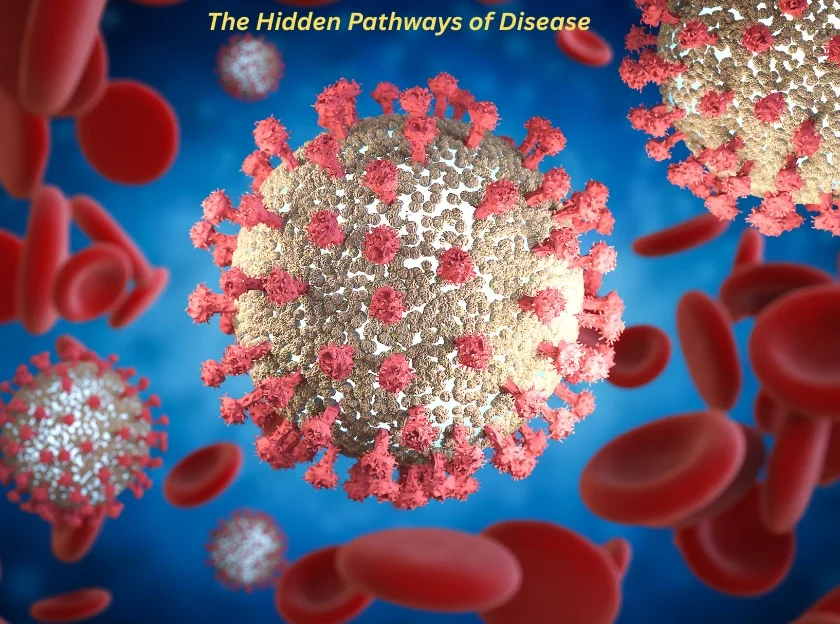Why This Debate Matters More Than You Think?
Have you ever found yourself puzzled by the disease vs disorder? You are not alone. For decades, patients, families, and even healthcare professionals have wrestled with these medical terms. While they may sound interchangeable, their meanings shape diagnosis, treatment, and even social perception. This article will take you through the disease and disorder comparison, exploring real-world examples, debunking myths, and uncovering why this debate truly matters.
A Historical Glimpse: How the Terms Evolved Over Time
Language in medicine has always carried weight. Centuries ago, “disease” was used to describe conditions with clear physical causes—often visible under a microscope. As medical science advanced, new terms were needed to capture conditions without obvious structural changes, giving rise to the word “disorder.”
For example, the medical classification of disease in the past was mostly focused on infections and organ damage. In contrast, “disorders” emerged in psychology and neurology, where functional issues were recognized without clear biological damage. Today, both terms coexist, but they are far from identical.
Core Definitions: Where Science Draws the Line
So, what defines a disease? A disease is often a pathological condition with identifiable causes—like bacteria, viruses, or genetic mutations. It usually shows symptoms vs causes in diseases and disorders that doctors can measure, such as high blood sugar in diabetes.
But what defines a disorder? A disorder typically refers to functional disruptions—where the system doesn’t work as expected, but no singular cause may be found. For instance, is anxiety a disease or a disorder? Experts classify it as a disorder because it involves functional changes in brain chemistry and behavior, rather than structural damage.
This medical difference disease vs disorder may sound subtle, but it carries deep consequences for treatment, insurance, and even how society perceives patients.
Disease vs Disorder: The Emotional and Social Impact
Words have power. When a condition is labeled as a disease, it often receives more legitimacy, research funding, and public understanding. Conversely, the term disorder sometimes faces stigma, especially in mental health.
Consider chronic disease vs mental disorder. People living with diabetes or cancer are seen as battling a recognized disease. Yet someone struggling with ADHD or depression, both classified as disorders, may still face misconceptions. This health conditions terminology gap affects how patients feel about themselves and how they are treated socially.
Myths That Keep Patients Confused:

There are several misconceptions surrounding this debate:
- Myth #1: Disorders are less serious than diseases. In reality, a disorder like severe depression can be life-threatening, just like heart disease.
- Myth #2: Diseases always have a cure, disorders don’t. Neither is guaranteed a cure; many conditions require lifelong management.
- Myth #3: The terms are interchangeable. The disease vs illness vs disorder distinction may feel academic, but it shapes diagnosis and policy.
These myths highlight why a clear classification of illnesses in medicine is so essential.
Case Comparisons: Spot the Difference in Practice
Let’s explore some disorder vs disease examples to make the distinctions easier:
- Is diabetes a disease or disorder? Diabetes is classified as a disease due to measurable pathological changes in insulin regulation.
- Is anxiety a disease or a disorder? Anxiety is considered a disorder since it reflects functional and behavioral disruptions.
- Alzheimer’s Disease vs Attention Deficit Hyperactivity Disorder (ADHD): Alzheimer’s involves structural brain damage (disease), while ADHD represents disrupted brain function (disorder).
- Pathological conditions vs functional disorders: Cancer is pathological (disease), while irritable bowel syndrome is functional (disorder).
Such examples of diseases and disorders in medicine illustrate how medical language guides treatment.
Why Doctors Still Debate the Terms?
Even experts sometimes disagree. The disease vs syndrome vs disorder debate is ongoing because not all conditions fit neatly into one box. A syndrome, for instance, refers to a group of symptoms without a single identified cause.
Doctors also face challenges in diagnosis and treatment differences. Insurance companies may treat a “disease” differently from a “disorder,” affecting coverage. Researchers argue that terminology can influence funding priorities, leading to imbalances between physical and mental health care.
No wonder some ask, why doctors call it disorder not disease—especially in psychiatry, where classification remains complex.
Cracking the Code for Patients: What You Should Really Focus On?
At the end of the day, patients shouldn’t get trapped by labels. Whether your condition is called a disease or disorder, the priority is management, lifestyle, and treatment choices.
Understanding types of diseases and disorders helps patients make informed decisions. For example:
- Physical conditions may need medication and surgery.
- Physical disease vs psychological disorder may require combining therapy, counseling, and medication.
So while disease vs disorder explained simply shows technical differences, the real goal is patient empowerment.
Future of Medical Language: Where Are We Headed?
With the rise of genetics, AI, and personalized medicine, tomorrow’s healthcare may reshape how we classify conditions. Instead of the rigid disease and disorder comparison, future models may integrate biological markers, functional patterns, and patient-reported experiences.
The common disorders vs rare diseases debate will also evolve as rare genetic conditions gain visibility through global research networks. Ultimately, the disease vs disorder in psychology may transform entirely as neuroscience deepens our understanding of the brain.
Wrapping Up: A Clearer Path Forward
The difference between disease and disorder may seem like a play on words, but it has real-world consequences for healthcare, funding, and patient identity. While diseases are typically tied to pathological changes and measurable markers, disorders often reflect functional or behavioral disruptions.
Yet, labels do not define a person. Whether you are navigating a disease or a disorder, what matters most is proactive care, emotional resilience, and informed choices. The path forward is clear: empower yourself with knowledge, ask questions, and never let terminology overshadow your journey toward health.
FAQs:
What is the difference between disease and disorder?
A disease involves pathological changes with identifiable causes, while a disorder refers to functional disruptions without a singular cause.
Is anxiety a disease or a disorder?
Anxiety is classified as a disorder, as it involves psychological and functional changes rather than structural damage.
Is diabetes a disease or disorder?
Diabetes is considered a disease because it has measurable biological causes, such as insulin resistance or deficiency.
Why do doctors call some conditions disorders and not diseases?
Doctors use “disorder” when the condition reflects disrupted function without a clear pathological marker, especially in mental health.
References:
- A disease is defined as a pathological condition with identifiable causes—such as infections, genetic abnormalities, environmental factors—and often has clear symptoms and measurable markers. In contrast, a disorder refers to an abnormality in the function of the body or mind and may lack a singular identifiable cause UPMC HealthBeatVerywell HealthiCliniq.
- The distinction is further reinforced by sources highlighting that diseases typically affect specific organs or systems and are diagnosable via tests, while disorders involve functional disruptions without clear markers UPMC HealthBeatiCliniqHealth Writer Hub.





